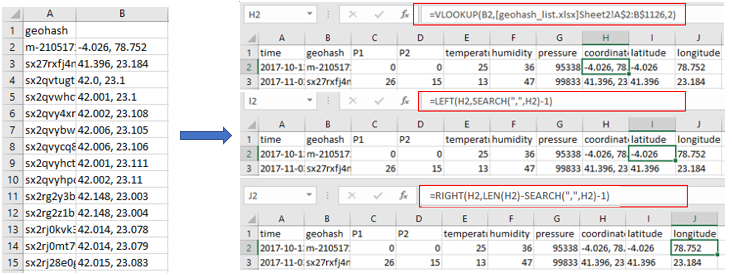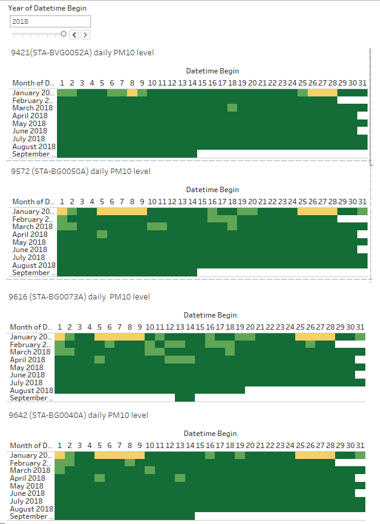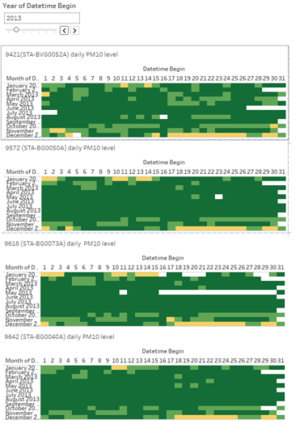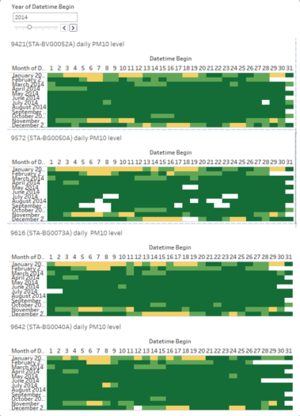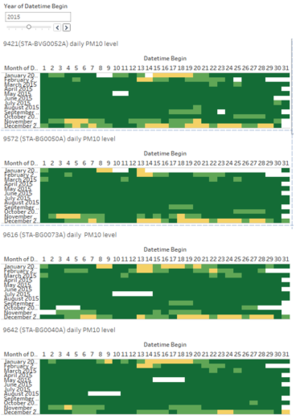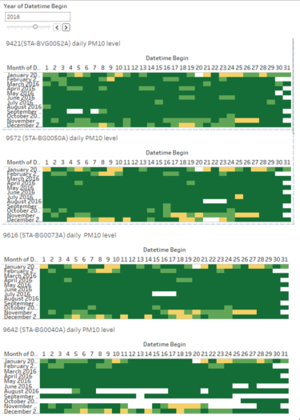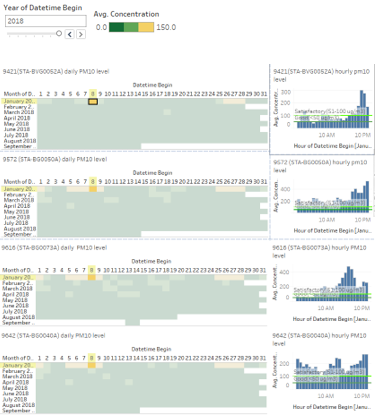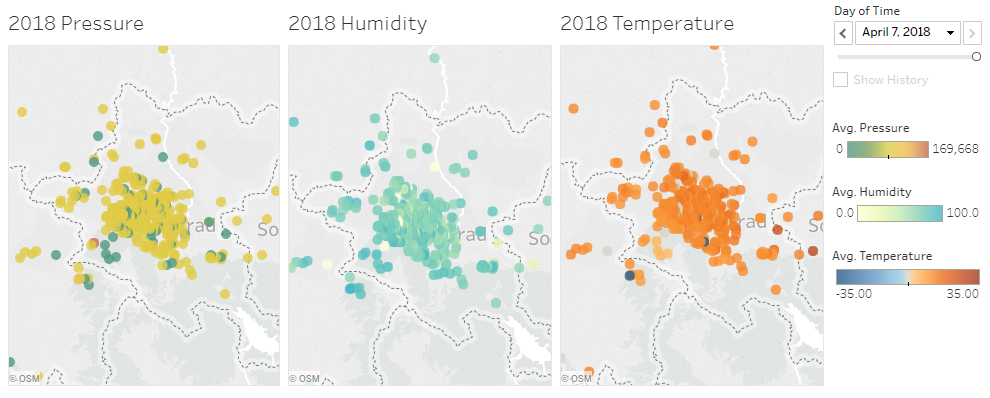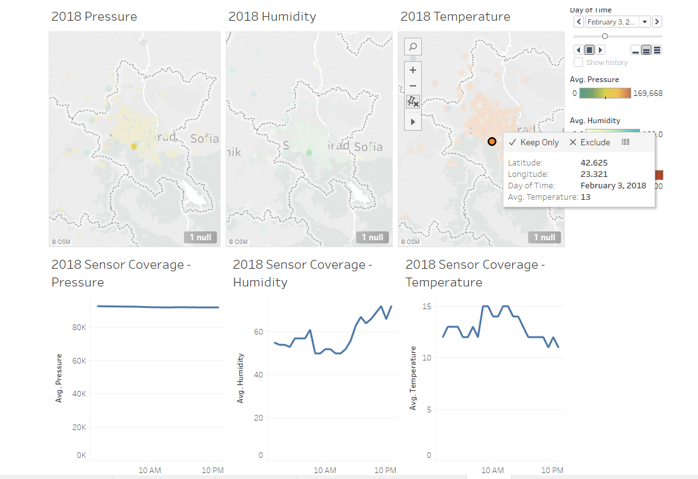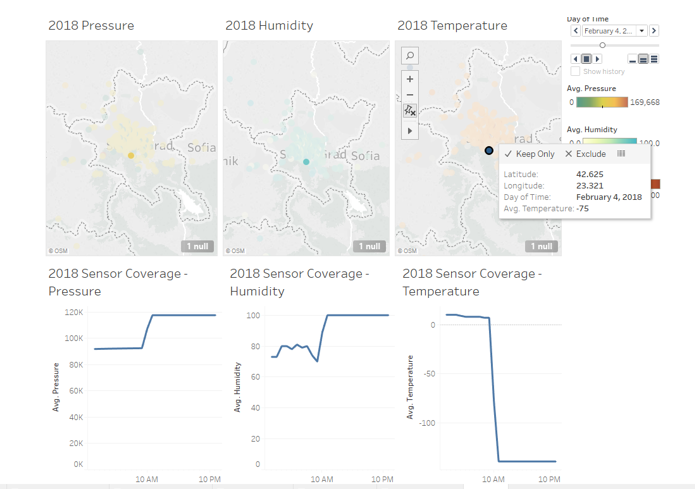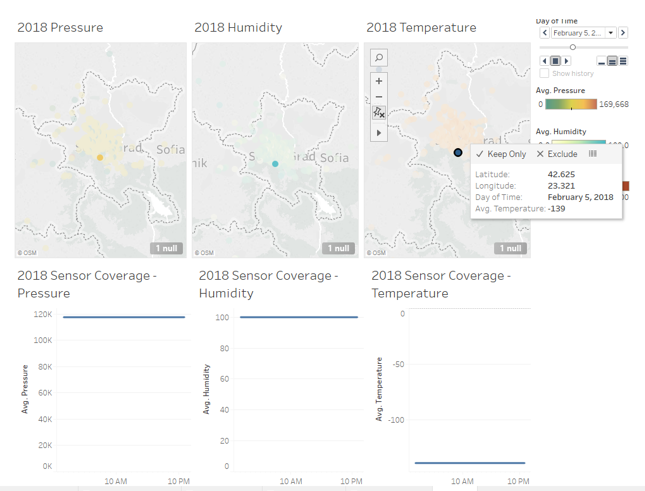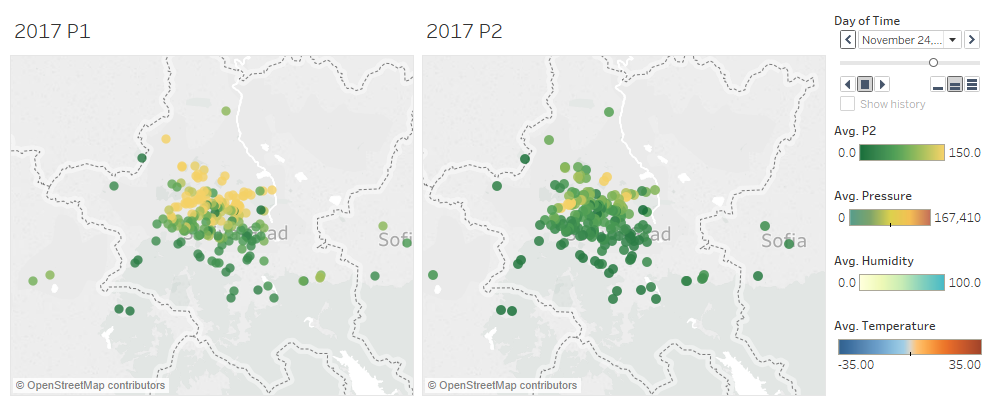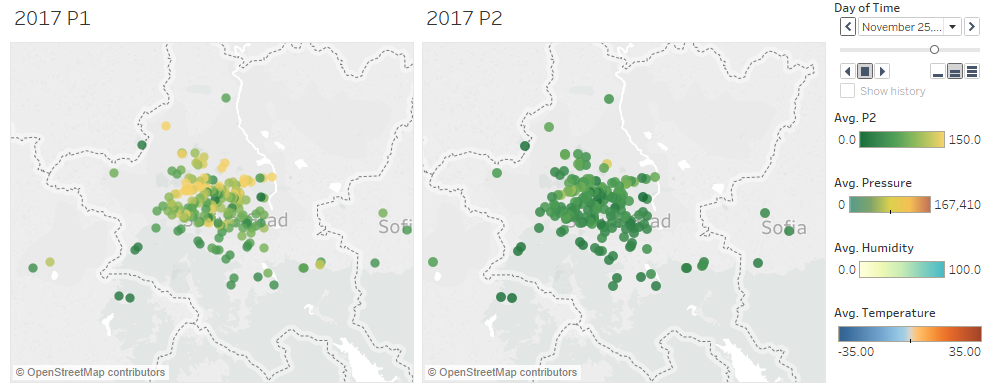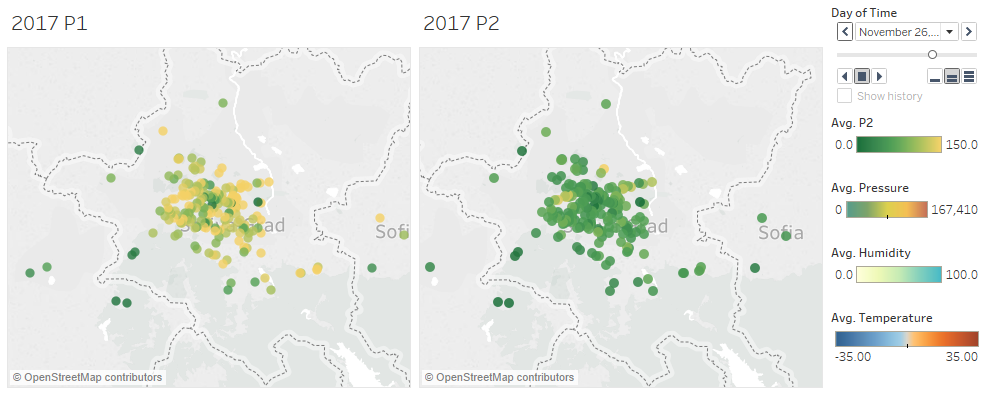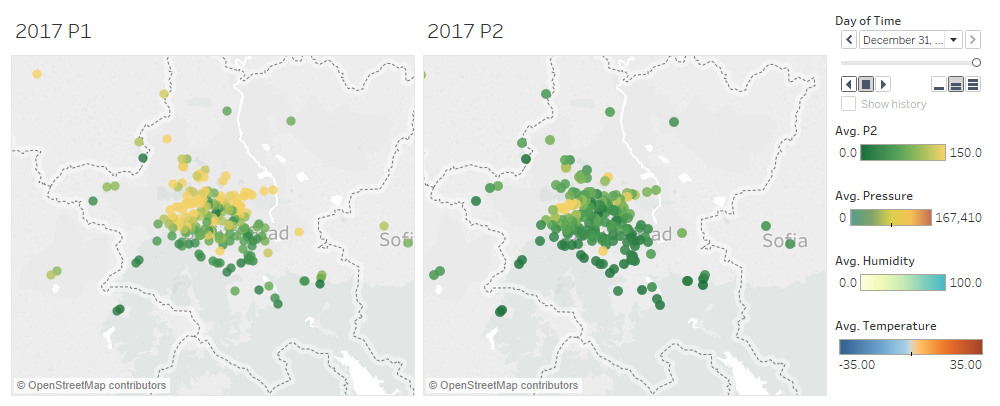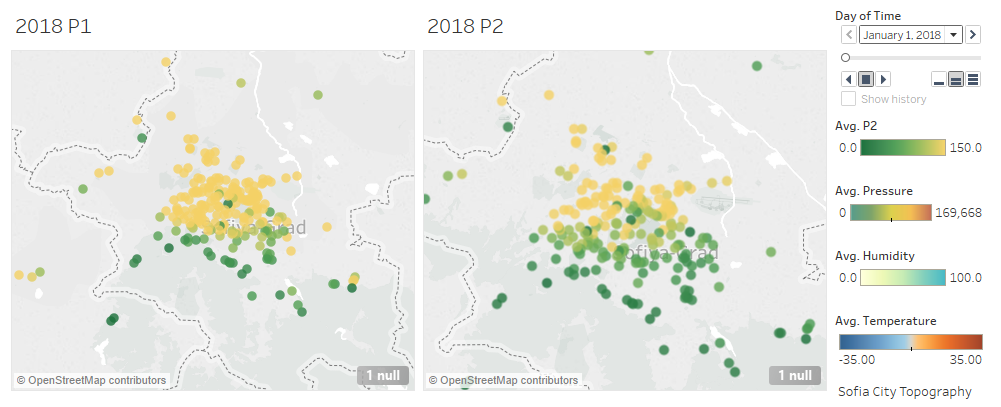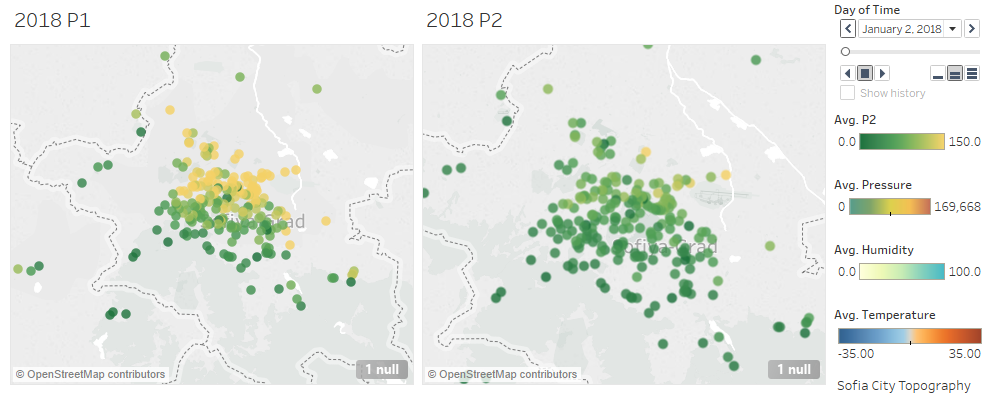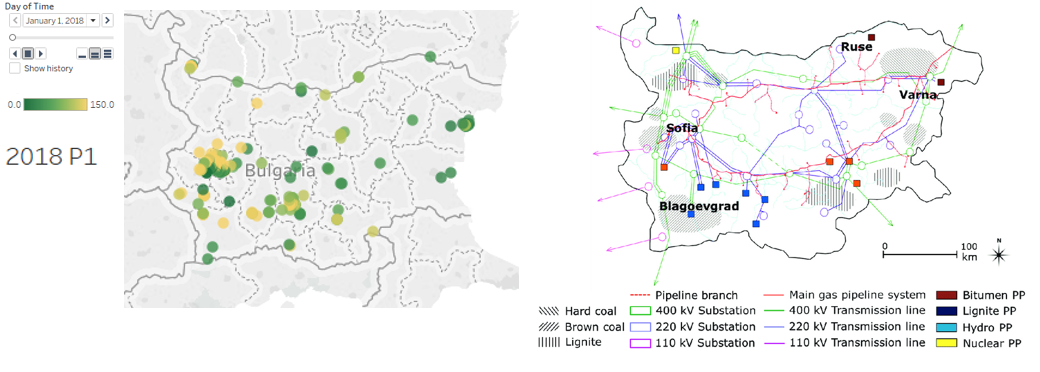IS428 2018-19 T1 Assign Fu Yu
Contents
Problem & Motivation
Air pollution is an important risk factor for health in Europe and worldwide. A recent review of the global burden of disease showed that it is one of the top ten risk factors for health globally. Worldwide an estimated 7 million people died prematurely because of pollution; in the European Union (EU) 400,000 people suffer a premature death. The Organisation for Economic Cooperation and Development (OECD) predicts that in 2050 outdoor air pollution will be the top cause of environmentally related deaths worldwide. In addition, air pollution has also been classified as the leading environmental cause of cancer.
Air quality in Bulgaria is a big concern: measurements show that citizens all over the country breathe in air that is considered harmful to health. For example, concentrations of PM2.5 and PM10 are much higher than what the EU and the World Health Organization (WHO) have set to protect health.
Bulgaria had the highest PM2.5 concentrations of all EU-28 member states in urban areas over a three-year average. For PM10, Bulgaria is also leading on the top polluted countries with 77 μg/m3on the daily mean concentration (EU limit value is 50 μg/m3).
According to the WHO, 60 percent of the urban population in Bulgaria is exposed to dangerous (unhealthy) levels of particulate matter (PM10).
Dataset Analysis & Transformation Process
Decode the geohash column in Air Tube data files
Geohash tells the station locations. However Tableau is not able to interpret geohash as geographic data. Before Air Tube data is imported to Tableau for analysis, geohash needs to be decoded into geographical coordinates. As the two Air Tube data files- data_bg_2017.xlsx and data_bg_2018.xlsx are of big sizes and there are duplicate geohash records in the data, an Excel file containing a unique geohash list was created.
Step 1: Use "pygeohash" package to decode the geohash list and output the coordinates in an Excel file
Step 2: Combine geohash list and coordinates list into one Excel file and update the coordinates, latitude, longitude in data_bg_2017.xlsx and data_bg_2018.xlsx using VLOOKUP, LEFT and RIGHT functions in Excel
Dataset Import Structure & Process
Interactive Visualization
Interesting & Anomalous Observations
Task 1: Spatio-temporal Analysis of Official Air Quality
| 1.2 A Typical Day in Sofia City
To investigate how PM10 concentrations vary from hours to hours in a day, one can simply highlight a day on the heatmap and the hourly PM10 concentration graphs will update accordingly. For example, as shown in the diagram above, on 8 January 2018, air quality in stations STA-BG0052A and STA-BG0050A is poor after 10pm while air quality in station STA-BG0073A is poor starting from 12pm and in STA-BG0040A, air quality is poor throughout the day. Trends:
|
| 1.3 Anomalies in the Datesetss
|
Task 2: Spatio-temporal Analysis of Citizen Science Air Quality Measurements
| 2.1 Sensor Coverage, Performance and Operation
The most recent sensor distribution (on 7 April 2018) shows that the sensors are not evenly spread out across the entire city. They are saturated in the center of the city. Nevertheless, the sensors did cover the central part of the city well.
However, the sensors were not always working properly. As shown in the graphs above, fora example, on 3 February 2018, the sensor at (42.625, 23.321) was working properly. Its readings of pressure, humidity and temperature fluctuate within reasonable ranges though the day. However, on 4 February 2018, the sensor temperature reading had a sharp drop from 7 degree to -139 degree at 9AM, which is not reasonable. At the same time, pressure and humidity readings also increased sharply, suggesting that the sensor might have a problem on 9AM, 4 February 2018. The suspect was approved by the static sensor readings on 5 February 2018, suggesting that the sensor was not working. Similar sensor behaviors can also be seen on other sensors such as the sensor located at (42.686, 23.347) after 14 February 2018 and the sensor located at (42.715, 23.161) after 7 February 2018. |
| 2.2 Air Pollution
Most of the time, pollution started from the northern part of the city. As time passes, the pollution can spread in different directions.
|
Task 3: Factors Affecting Air Quality in Sofia City
| Local Energy Sources
The diagrams above shows that in cities like Sofia and Blagoevgrad, P1 concentration is relatively high. This might be because these cities are along the main gas pipeline system. Since the cities are rich in hard coal, the gas and energy generated in these cities might be from burning of hard coals, which damages the air. |
